barnacle
Neoacasta sp.1
This small pinkish species is covered in short, upturned spines. This species is found embedded in sponges of the genus Phyllospongia.
Morphology
Small, ~5mm diameter, the pink shell is conical and each shell plate has numerous short, upturned spines. The basal plate is cup-shaped and ringed with concentric growth lines
Evolution
The Acastinae appear in the fossil record during the mid to late Miocene 18–23 mya and have subsequently radiated into >80 species. While no fossil species has been definitively associated with a host, it is presumed that this radiation occurred as a direct result of being able to embed in the tissues sponge hosts. Current research being carried out by the WA Museum is investigating the evolution of this group and their relationship with their hosts.
Behaviour
Barnacles are sessile, being permanently attached to the substratum. Barnalces feed by filtering the water column for food using highly modified limbs, called cirri.
Method of reproduction
Hermaphroditic, internal fertilisation
Habitat
Marine
Embedded in bladed sponges
Distribution
Western Australia
| Kingdom: | Animalia |
|---|---|
| Phylum: | Arthropoda |
| Subclass: | Thecostraca |
| Order: | Sessilia |
| Suborder: | Balanomorpha |
| Superfamily: | Balanoidea |
| Family: | Archaeobalanidae |
| Genus: | Neoacasta |
| Species: | sp.1 |
| Rank: | species |
|---|---|
| Commercial Impact: | None |
| Conservation Assessment: | Least Concern |
Cite this page
Western Australian Museum Collections https://museum.wa.gov.au/online-collections/names/neoacasta-sp1
Accessed 12 Dec 2025
Rights
We support the open release of data and information about our collections.
Text content on this page is licensed under a Creative Commons Attribution 4.0 International License.
Image content on this page is copyright WA Museum.


